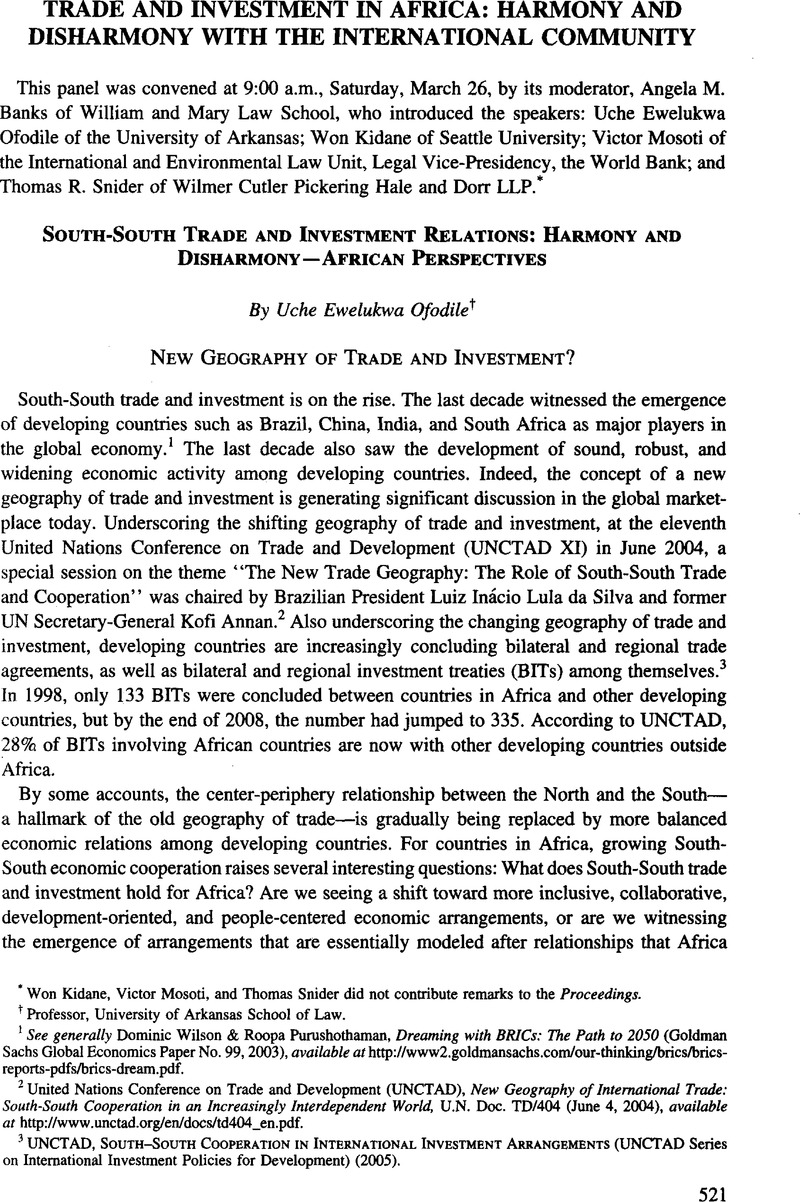Article contents
South-South Trade and Investment Relations: Harmony and Disharmony—African Perspectives
Published online by Cambridge University Press: 28 February 2017
Abstract

- Type
- Trade and Investment in Africa: Harmony and Disharmony with the International Community
- Information
- Copyright
- Copyright © American Society of International Law 2011
References
1 See generally Wilson, Dominic & Purushothaman, Roopa, Dreaming with Brics: The Path to 2050 (Goldman Sachs Global Economics Paper No. 99, 2003)Google Scholar, available at http://www2.goldmansachs.com/our-thinking/bricsÆrics-reports-pdfs/brics-dream.pdf.
2 United Nations Conference on Trade and Development (UNCTAD), New Geography of International Trade: South-South Cooperation in an Increasingly Interdependent World, U.N. Doc. Td/404 (June 4, 2004), available at http://www.unctad.org/en/docs/td404_en.pdf.
3 UNCTAD, South-South Cooperation in International Investment Arrangements (Unctad Series on International Investment Policies for Development) (2005).
4 UNCTAD, Accra Accord, para 7, Apr. 20-25, 2008, available at http://www.unctad.org/en/docs//tdxii_accra_accord_en.pdf.
5 In Resolution 58/220 of December 23, 2003, the General Assembly chose December 19th as United Nations Day for South-South Cooperation.
6 See www.focac.org/eng/.
7 See generally Centre for Chinese Studies, China’s Interest and Activity in Africa’s Construction and Infrastructure Sectors (2006).
8 Trade Law Centre (TRALAC), The African Trading Relationship with India.
9 UNCTAD, Economic Development in Africa Report 2010: South-South Cooperation: Africa and the New Forms of Development Partnership 29 (2010).
10 UNCTAD, supra note 2, para. 1 (noting that the share of the South in global trade and financial flows has grown dramatically but that “[n]ot all countries in the South have been able to take part in this journey”).
- 2
- Cited by


